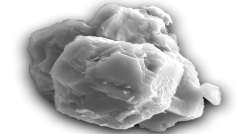Scientists identify stardust - oldest material on Earth, contained inside meteorite
According to the information, the town of Murchison in Victoria state witnessed oldest of 40 tiny dust grains, that were trapped inside the meteorite fragments about 7 billion years ago, about 2.5 billion years before the sun, Earth and rest of our solar system formed.

Scientists on Monday revealed crucial information about a meteorite that had crashed into rural southeastern Australia in 1969. Giving out more details, the scientists said the meteorite contained the oldest material ever found on Earth - Stardust. The stardust predated the formation of our solar system by billions of years, scientists revealed.
According to the information, the town of Murchison in Victoria state witnessed the oldest of 40 tiny dust grains, that were trapped inside the meteorite fragments about 7 billion years ago, about 2.5 billion years before the sun, Earth and rest of our solar system formed.
In fact, all of the dust specks analysed in the research came from before the solar system's formation - known as "pre-solar grains" - with 60 percent of them between 4.6 and 4.9 billion years old and the oldest 10 percent dating to more than 5.6 billion years ago.
The pre-solar grains were examined by Philipp Heck, curator of meteorites at Chicago's Field Museum. Heck is said to have a piece of the meteorite in its collection.
"They're solid samples of stars, real stardust," Heck, who led the research published in the scientific journal Proceedings of the National Academy of Sciences, said in a statement.
When the first stars died after two billion years of life they left behind the stardust, which formed into the block which fell to earth as the meteorite in Australia.
The findings were "extremely exciting," he added.
Also Read | New machine can keep livers alive outside body for one week